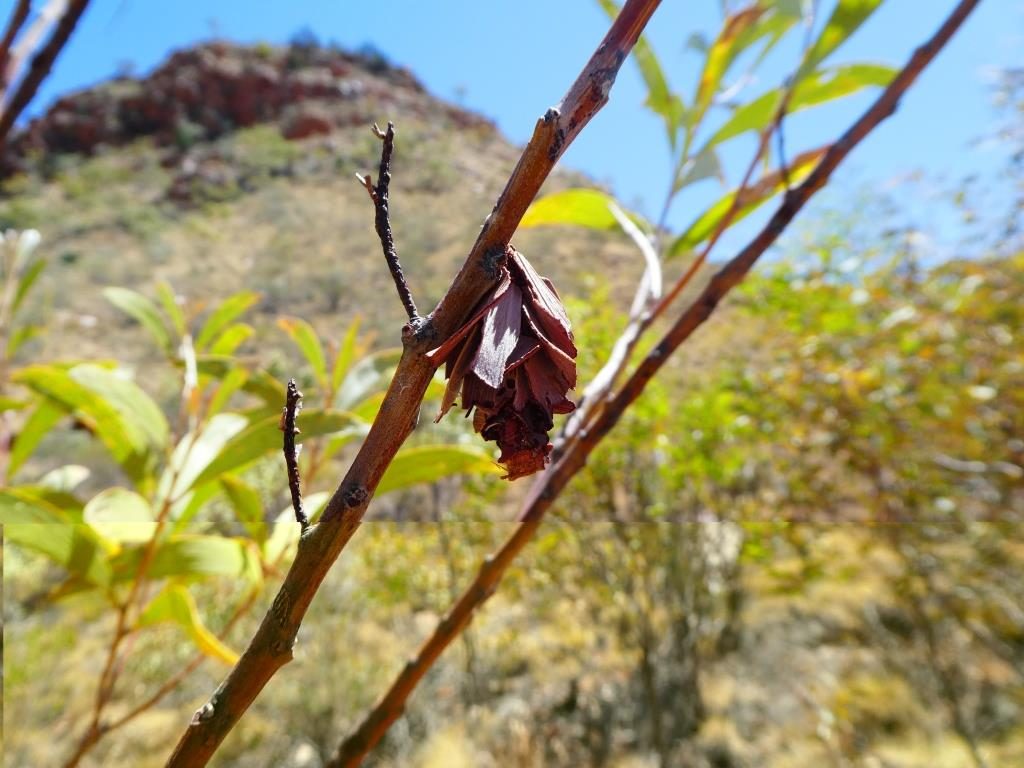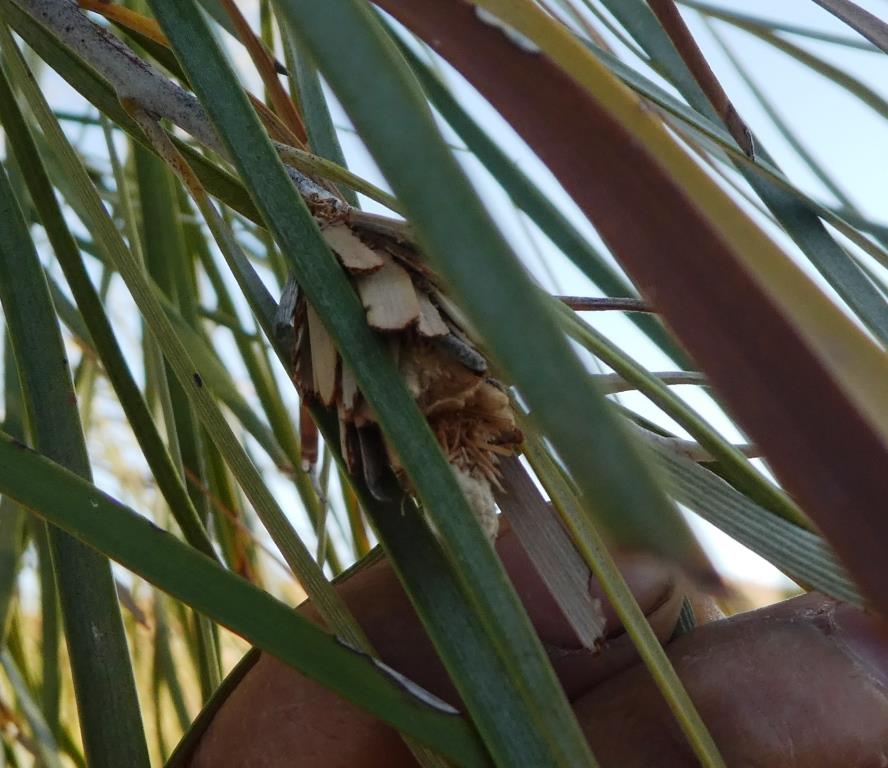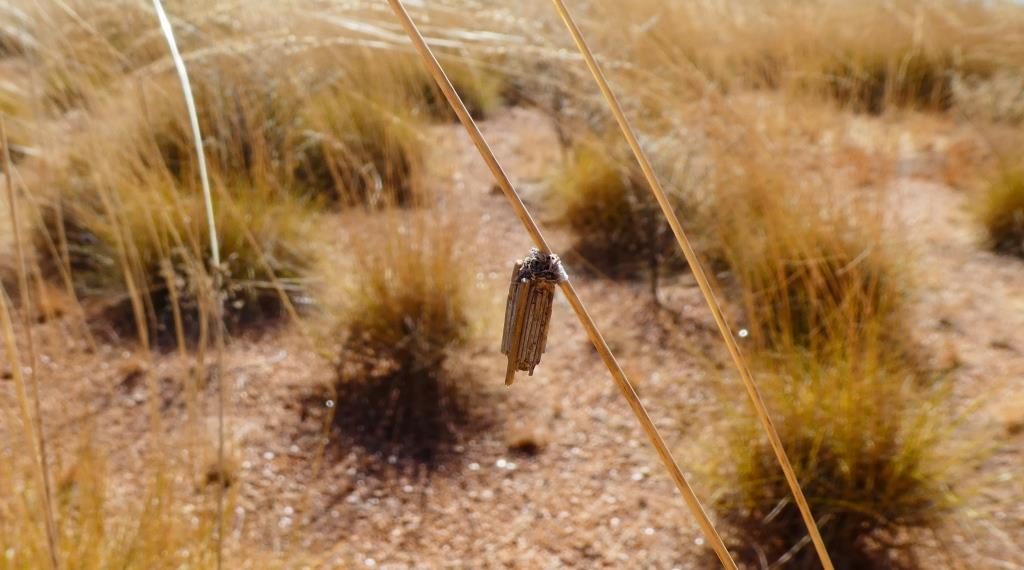Bagworm Moths or Case Moths belong to the family Psychidae. They are ranked in the Tineoidea with the family Coleophoridae (also known as Case Moths), though this latter family generally build with silk alone and have females that develop wings following pupation, unlike the females of Psychidae. The Psychidae adult female is largely wingless (has vestigial wings), while the male has transparent wings and a black body.
Their name comes about as the caterpillars in this family construct a protective case in which to hide, which is covered completely with plant materials and has no silken case exposed. The caterpillar larvae construct and live in a silken case, to which they attached pieces of leaf or twigs to disguise it. Sand, soil, lichen and other plant materials may also be used in the construction of the case. Some individuals have been known to attach pieces of artificial material such as aluminium foil to their case in captivity.
While some species are monophagous, meaning that they are specialised to their host, many are polyphagous (can feed on a variety of plant species). The leaves and twigs are often taken from the host plant to which the case is attached, though they can also be found attached to rocks or other structures such as fences. The case itself can be up to 5 cm long, though are often smaller. The bag is broadest in the middle and tapers at each end.
In the larval stage, Bagworms stay within their constructed case and extend their head and thorax to feed of leaves of the host plant. The head and thorax are heavily armoured and they have three pairs of legs that are strong enough to drag the case around. As the larvae grow, they can attach further materials to the front of the case and once they have fed sufficiently, they attach to their host, reverse their body so that their head faces downwards and then pupate. Once they have pupated, the adult male leaves the case to find a mate, whereas the female stays within her case for protection. She can remain in the case throughout copulation and then lay eggs in the case before dying.
In central Australia, there are several species of Case Moth, common species being the Leafy Case Moth (Hyalarcta huebneri) and the Ribbed Case Moth (Hyalarcta nigrescens). The Leafy Case Moth uses small pieces of leaf from the host plant to decorate the case. Because this species is polyphagous, the look of the case itself can vary widely. The Ribbed Case Moth has a case that consists of a silken bag that unlike others is not decorated with plant material, but rather has several ridged ribs running along its length. One of these was reported at Owen Springs by Barbara Gilfedder of the Alice Springs Field Naturalists in their February 2016 Newsletter. The Faggot Case Moth (Clania ignobilis) and Stick Case Moth (Clania lewinii) are common around Australia and so you may have seen them around. These species have cases that are constructed from long parallel twigs like a log cabin, often with one or two of the twigs extending longer than the others for the Faggot Case Moth and of equal length for the Stick Case Moth.
You can download this information as a PDF Fact sheet – Download
More information on the life stages of Leafy Case Moths can be found in the article Life History and Biology of the Leaf Bagworm, Hyalarcta Huebneri by N.W. Heather (1975, Australian Journal of Entomology, 14(4), 353-361).
Categories:
Biodiversity, Invertebrates, Native Fauna



